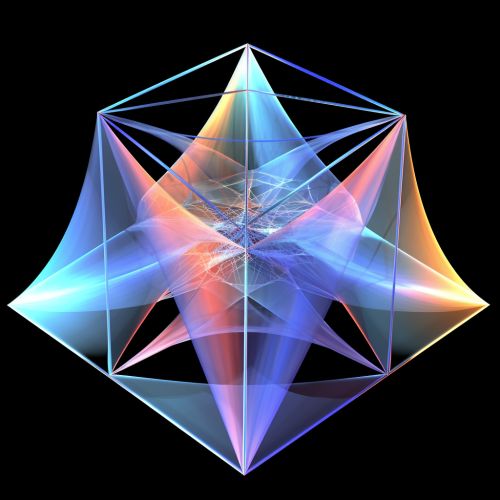Vector space
Definition
A vector space (also called a linear space) is a collection of objects called vectors, which may be added together and multiplied ("scaled") by numbers, called scalars. Scalars are often taken to be real numbers, but there are also vector spaces with scalar multiplication by complex numbers, rational numbers, or generally any field. The operations of vector addition and scalar multiplication must satisfy certain requirements, called axioms, listed below.
Axioms
A vector space over a field F (such as the real numbers R or the complex numbers C) is a set V equipped with two operations that satisfy the eight axioms listed below.
1. Associativity of addition: u + (v + w) = (u + v) + w for all vectors u, v, w in V. 2. Commutativity of addition: u + v = v + u for all vectors u, v in V. 3. Identity element of addition: There exists an element 0 in V, called the zero vector, such that v + 0 = v for all vectors v in V. 4. Inverse elements of addition: For every vector v in V, there exists an element −v in V, called the additive inverse of v, such that v + (−v) = 0. 5. Compatibility of scalar multiplication with field multiplication: a(bv) = (ab)v for all scalars a, b in F and all vectors v in V. 6. Identity element of scalar multiplication: 1v = v for all vectors v in V, where 1 denotes the multiplicative identity in F. 7. Distributivity of scalar multiplication with respect to vector addition: a(u + v) = au + av for all scalars a in F and all vectors u, v in V. 8. Distributivity of scalar multiplication with respect to scalar addition: (a + b)v = av + bv for all scalars a, b in F and all vectors v in V.


Examples
Real coordinate spaces
The prototypical example of a vector space is the Euclidean space Rn, consisting of all column vectors of n real numbers. Its operations of addition and scalar multiplication are the standard ones.
Function spaces
Given any set X, the set F(X) of all functions from X to the real or complex numbers is a vector space over the same field. It is infinite-dimensional if X has more than one element.
Matrix spaces
Given two positive integers m and n, the set of all m-by-n matrices becomes a vector space if we define vector addition and scalar multiplication as being performed entrywise (just as with coordinate spaces).
Subspaces
A subspace of a vector space V is a subset H of V that is itself a vector space, using the same addition and scalar multiplication operations. This requires H to be closed under the operations of V and, more specifically, that H contains the zero vector of V.
Linear combinations and spans
A linear combination of some vectors is obtained by multiplying each vector by a scalar and adding the results. The set of all possible linear combinations of a given set of vectors is called the span of the set. It is the smallest vector space that contains the set.
Linear independence and bases
A set of vectors is linearly independent if no vector in the set is a linear combination of the other vectors. A set of vectors spans a vector space if every vector in the vector space can be written as a linear combination of vectors in the set. A basis for a vector space is a linearly independent set that spans the space.
Dimension
The dimension of a vector space V is the number of vectors in any basis for V. It is often denoted by dim(V) or as n or m.
Homomorphisms and isomorphisms
A function between two vector spaces is a linear map (also called a linear transformation or linear operator) if it preserves the vector space operations. When a bijective linear map exists between two vector spaces, they are called isomorphic.
Dual space
Given any vector space V, the dual space V* is defined as the set of all linear maps from V to the field of scalars. Each vector space has a dual, and the dual of the dual of a vector space V is isomorphic to V.
Normed vector spaces
A norm on a vector space V is a function ||•|| from V to the real numbers that satisfies the following conditions for all vectors u, v in V and all scalars a in F.
Inner product spaces
An inner product space is a vector space V along with an inner product, i.e., with a map that associates each pair of vectors in V with a scalar.
